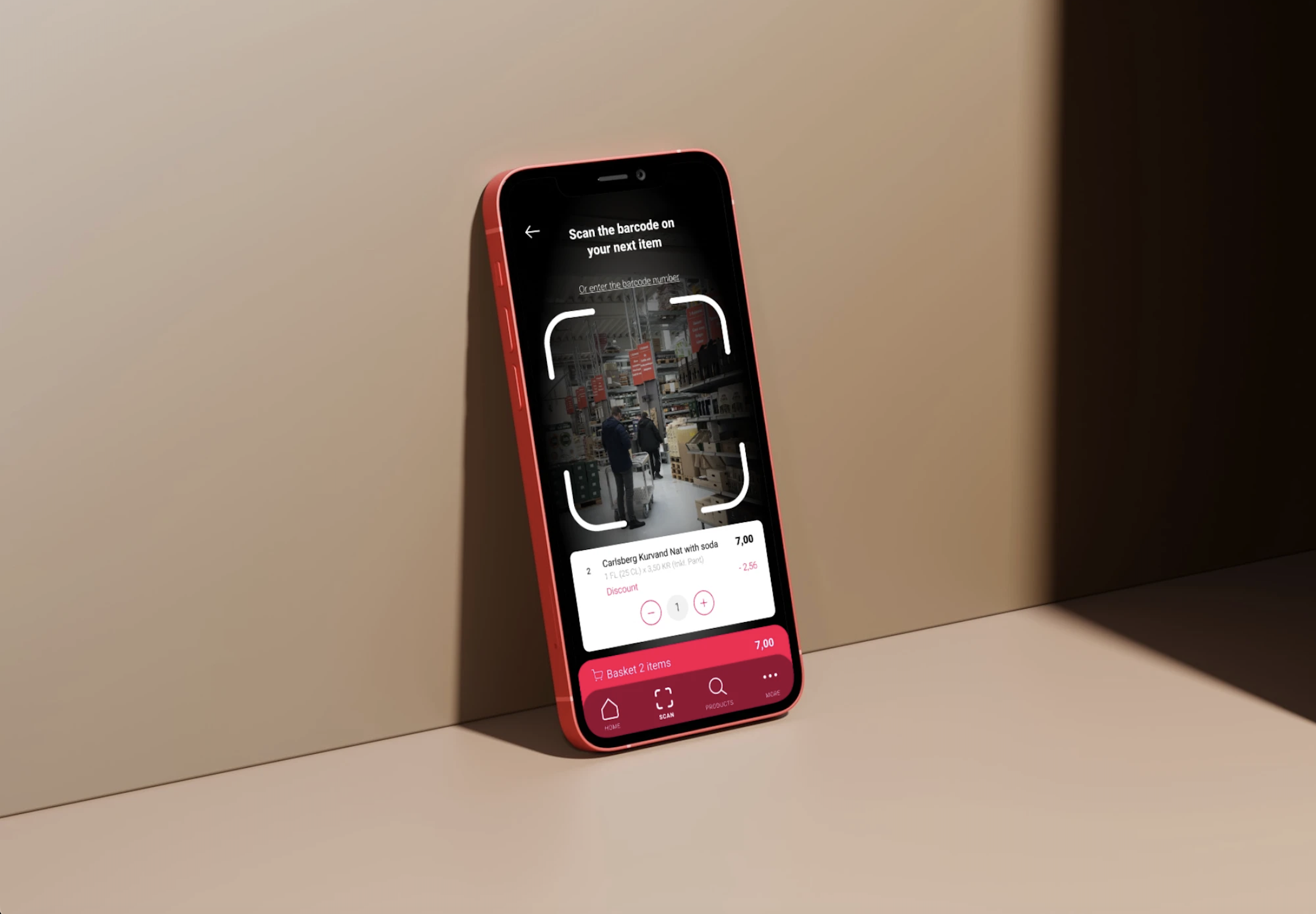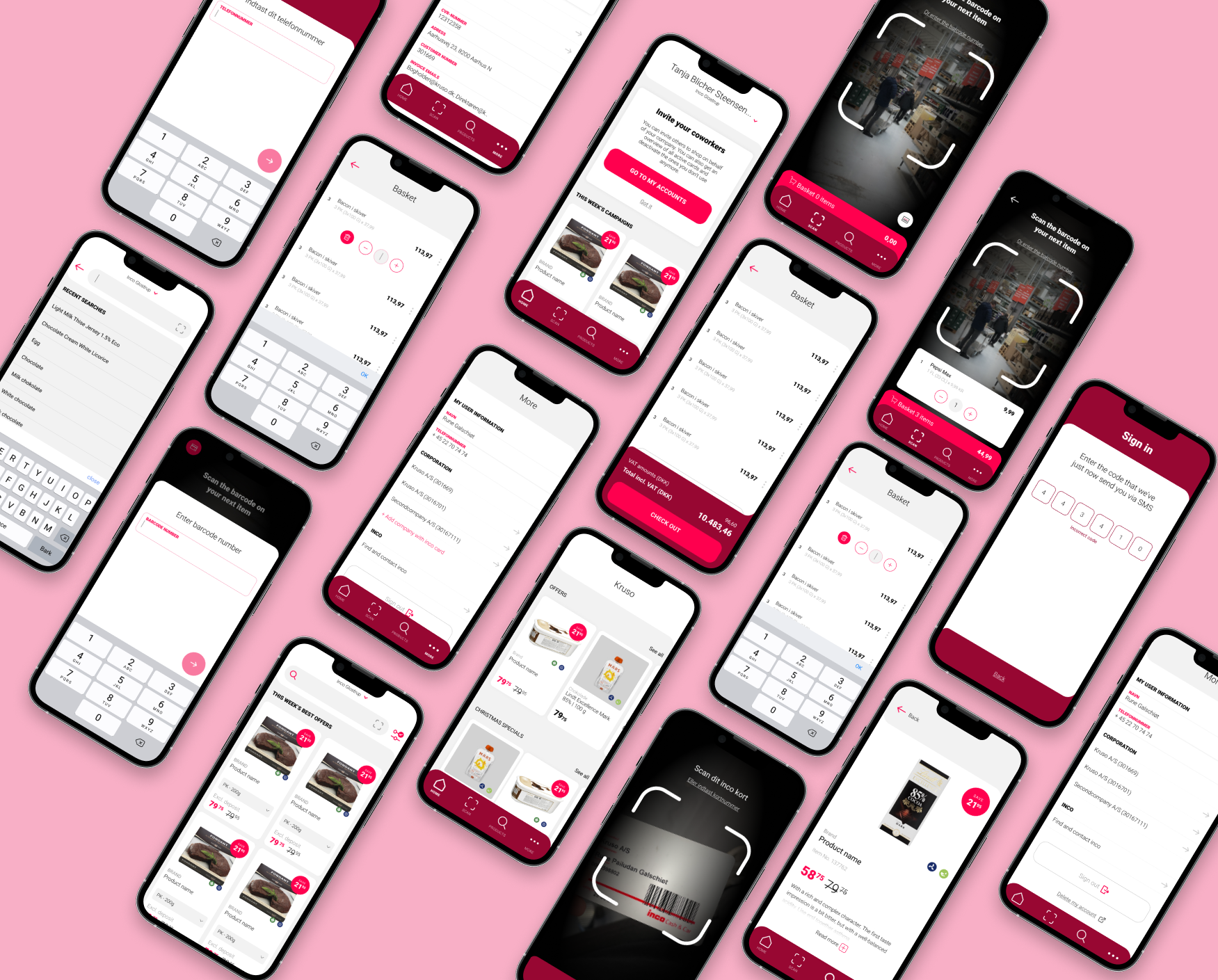
Inco cash & carry
Elevating the B2B shopping experience
My role
Ux Designer
Case
This project was initiated to develop a native app that enables Inco's customers to use self-service in the warehouses via their smartphones, with access to intelligent and personalized services. In the presentation, I will primarily cover the creation of the Login Flow, whose design process provides valuable insight into how each flow was crafted using the same methods and theories.
User flow
The user flow for the registration and login phase has been designed to create an intuitive and reassuring experience for users, as this is their first encounter with the app. To ensure smooth navigation and clarity, the focus has been on guiding users step-by-step through the process with clear options that make it easy for them to move forward or back, giving them a sense of control over the process. This allows them to take their time and feel confident and comfortable with their choices, creating a positive and welcoming start to their experience with the app.
Wireframes
The user flow for the registration and login phase has been developed to provide an intuitive and secure experience for users, as this is their first interaction with the app. To ensure smooth navigation and clarity, the focus has been on guiding users step-by-step through the process with clear options, making it easy for them to move forward and back, so they always feel in control of the process. This approach allows them to take their time and ensures they feel secure and comfortable with their choices, creating a positive and welcoming start to their experience with the app.
New regular user
New regular user invited by admin user
Register company and create admin user
New user created with Inco card
think aloud usability test
We chose the think aloud usability test, since the purpose of the user test was to determine whether the participants understood how to use the app as intended. Through tasks that represent real-life scenarios, the test highlighted whether the design and flow are practical and logical for users. It also provided insights into any potential errors, gaps, or points of frustration for users that might need to be adjusted.
Design adjustment
Based on the users' feedback from the usability test, which highlighted several areas where the app could be improved, a high-fidelity prototype was created. Below is an example of the start of the login flow with the phone number, where it is specified that the user’s own phone number should be used, based on insights from the test regarding confusion about which number should be used.
Final DESIGN
To ensure that the app keeps customers at the center, we chose a user-centered approach from the outset. We asked questions such as "Who are the users, and what are their needs?" and involved employees from across Inco’s organization in the design process. Through an agile participatory design method, prototypes were tested and improved iteratively, based on feedback from employees who interact with customers daily. This iterative process ensured that the final product not only met the users' needs but also supported Inco's business goals. The design process is also reflected in the final design, which, from start to finish, focuses on the users and their shopping habits, with the option to further personalize their experience, such as through shortcuts to frequently purchased items.





